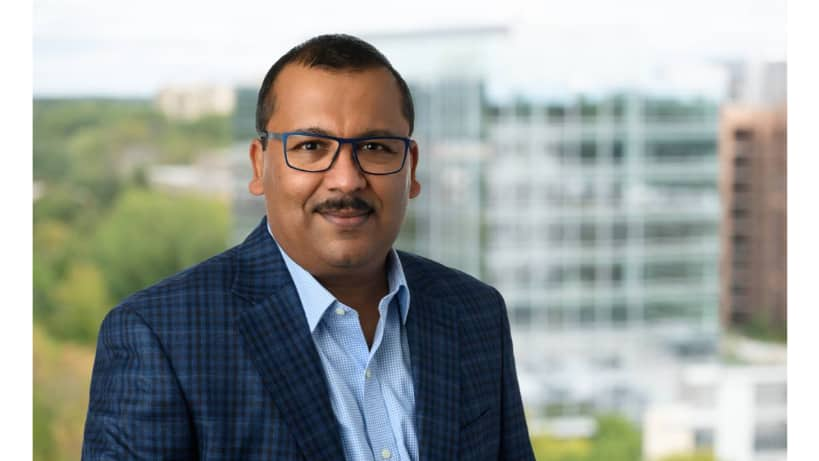While the future of technology, dictated by AI, cloud computing and the likes, cannot be fully predicted, one thing is for sure, in the SDB era, the future isn't code-less, it's code-plus with the human engineer in the loop.

Rohit Kedia, CEO, Xoriant
Technology has undergone a seismic shift — and so has the role of the software engineers. For decades, their output was measured in software delivery and reliability, debugging speed, developer experience and efficiency. But as the landscape continues to evolve rapidly—with companies accelerating their journey to becoming a software-defined businesses (SDB), where intelligent platforms power all operations, generating data and insights for developing new business models—tech leaders must rethink what digital engineering truly means and how the role of the engineer is evolving.
While the future of technology, dictated by AI, cloud computing and the likes, cannot be fully predicted, one thing is for sure, in the SDB era, the future isn't code-less, it's code-plus with the human engineer in the loop.
Algorithmic thinking is the new craft
When Rockwell Automation, once mainly a hardware manufacturer, recognized the threat from cloud-native competitors in 2021, it launched a bold shift to a subscription-based SaaS model. They embedded “digital threads” into their industrial controls hardware to deliver software-based outcomes and build a services-led ecosystem. This kind of business pivot doesn’t just need good software know-how but a data-driven operating model – hallmark of a SDB. At the core of this is algorithmic thinking – a mental model that allows engineers to frame challenges, evaluate trade-offs, and make architectural decisions. These are not just skills, they’re modes of thinking that machines can support but not replicate.
The engineers of tomorrow must lean into these strengths.
It is no longer about memorizing syntax; it’s about speed and agility in understanding logic and systems thinking. As AI handles more of the "how," engineers must own the "why" and the "what's next." The age of executing predefined specs is ending and engineers are increasingly responsible for shaping the very platforms they bring to life – the platforms that underpin the sustenance and success of the software-defined business. This requires a strong orientation toward user empathy, iterative ideation, and stakeholder collaboration so they can embed themselves in customer journeys — from product design to personalized experiences — ensuring every software-defined initiative delivers real value to end users.
Quality engineering in a probabilistic world
AI accelerates engineering, but it also introduces new risks. Auto-generated code, despite its efficiency, necessitates human oversight to identify security vulnerabilities, compliance issues, and embedded biases that AI models, especially those trained on open data, may overlook. DBS Bank, a leading Asian financial services group, takes a co-pilot approach to using AI, ensuring there is always a human in the loop. While they use Gen AI to enhance efficiency, they complement and “not” replace human judgment especially in sensitive functions such as risk assessment and customer interactions. That’s why secure programming is not just a technical mandate but a mindset shift. Engineers must now become skilled validators, not just product and platform architects.
The skill set needs to expand to include rigorous code auditing, threat modeling, and proactive defense against adversarial inputs. In today’s world, it must be foundational, built into the very first lines of code, whether written by a human or a machine.
Perhaps the most paradigm-shifting impact of AI is the move from deterministic to probabilistic software. Traditional systems are governed by clear inputs and predictable outputs, but AI-based systems aren’t, and a single prompt may yield multiple valid responses. This demands a new model of quality assurance. Engineers must now design testing frameworks that can evaluate variance, interpret confidence thresholds, and account for uncertainty.
In this new landscape, quality isn’t just about eliminating bugs. It’s about ensuring explainability, traceability, and trust in probabilistic outcomes. That calls for a blend of statistical thinking and software acumen, a combination that will define the next generation of engineering leaders.
The Rise of the Creator-Engineer
Amongst all the changes the role of the software engineer is undergoing, particularly in service of building software-defined businesses, perhaps the biggest one is moving from executor to creator. Unlike traditional IT services roles that center on infrastructure and operations, digital engineering teams are embedded in high-complexity, low-volume projects where innovation takes precedence over routine delivery. These engineers operate at the intersection of advanced technology and business transformation, building a platform backbone, embedding intelligence in every layer to extract insights for refining existing business models or spinning out completely new ones.
Reskilling Is Not Optional. It's Existential.
All this conversation around building software-defined businesses leveraging applied intelligence and automation often veers toward job loss, but that narrative misses a bigger point. Across industries, digital demand still exceeds digital capacity – especially when especially when you consider what being software-defined really means for the survival and growth of businesses. There is far more work to be done than there are skilled hands to do it. What new technology changes is not the volume of work, but the nature of it.
Engineering teams of the future may look less like pyramids and more like diamonds – flatter, with more mid-level expertise and domain-specialized roles, but the foundation of those teams must still rest on critical thinking, creative problem-solving, and cross-functional collaboration. Organizations that embrace this shift by investing in design literacy, security-first mindsets, and modern QA frameworks will be the ones that thrive. The others will be left automating yesterday’s tasks instead of shaping tomorrow’s platforms.
However, it’s important to note that “training” alone is not enough. Organizations must fundamentally upskill their teams—transforming how they think, work, and solve problems. This means moving beyond just completing tasks to developing AI-first thinking, where engineers build scalable, secure, and future-ready platforms by embedding intelligence into every process, product, and decision.
Ask DBS Bank, which continues to be studied as a transformation role model, how they pulled off such a massive shift, and they will tell you, “To effect this change at scale, we had to teach our people how to use the tools of innovation and provide them with opportunities to apply these tools in an environment where it is safe to take risks. The willingness from the leadership to resource this change enabled a building up of the workforce’s innovation ‘muscles’ to create a startup culture.” Quite a feat for an organization of 33,000 people!
As businesses across industry verticals become increasingly software-defined, the future of digital engineering belongs to those who can think beyond the IDE – engineers who can collaborate across disciplines, experiment boldly, and anticipate how technology intersects with society, security, and sustainability.
Empower your business. Get practical tips, market insights, and growth strategies delivered to your inbox
By continuing you agree to our Privacy Policy & Terms & Conditions
